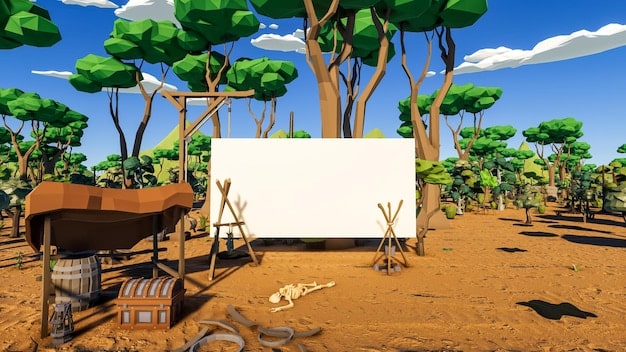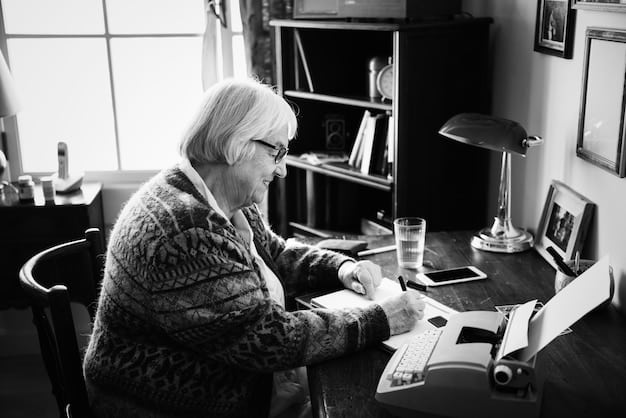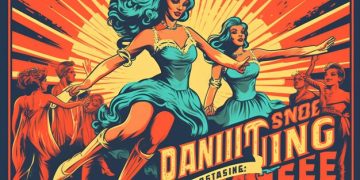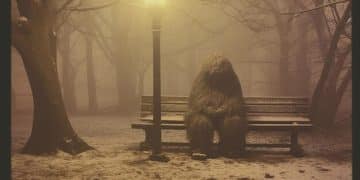The Unsung Heroes of Animation: Rediscovering Forgotten Classics

The Unsung Heroes of Animation: Rediscovering ‘Forgotten Classics’ Cartoons shines a light on the influential yet often overlooked animators who crafted beloved animated films and television shows, celebrating their enduring impact on the world of animation.
Animation history is rich with iconic characters and heartwarming stories, but often the spotlight shines solely on the studios and directors. It’s time to celebrate the unsung heroes of animation: rediscovering forgotten classics’ cartoons and the talented individuals who poured their creativity and passion into every frame.
Rediscovering the Pioneers of Animation
Animation, as an art form, has always relied on collaborative effort. While directors and studios often receive most of the recognition, many talented animators, storytellers, and artists have contributed significantly to the creation of our favorite animated classics.
This section aims to rediscover these pioneering figures, recognizing their skills and lasting impact on animation history. Their creativity and dedication, though sometimes overlooked, is the foundation upon which many iconic cartoons were built.
Lillian Friedman Astor: A Trailblazer in Animation
Lillian Friedman Astor was one of the first women to work in animation during its initial years. Her career started at Fleischer Studios, where she helped create some of the most beloved characters from the Golden Age of animation.
She played a vital role in bringing characters like Betty Boop and Popeye the Sailor to life. Despite facing numerous challenges as she worked in a male-dominated industry, Astor persevered and proved the importance of women in animation.
Iwao Takamoto: Defining Cartoon Style
Iwao Takamoto’s influence on animation is undeniable. As a character designer for Hanna-Barbera, he helped define the look of numerous iconic shows such as Scooby-Doo, The Flintstones, and The Jetsons.
Growing up in an internment camp during World War II fueled his imagination and creativity, which in turn led to original character designs and compelling visual styles. His work remains a key part of animation history.

- Bringing visibility to untold stories of animators.
- Acknowledging the historical significance of forgotten contributors.
- Inspiring new generations of animation professionals.
The contributions of such pioneers are vital to the evolution of animation. Recognizing their efforts not only honors their legacies but also inspires future generations to delve into the history of animation.
The Women Who Shaped Early Animation
Historically, animation has been seen as a male-dominated field, but numerous women made incredible contributions to its beginnings. Breaking barriers and challenging prevailing stereotypes, these women were vital to the growth of animation.
Understanding their stories can offer a richer appreciation of animation history and highlight the importance of inclusivity in the industry.
The Ink and Paint Department
In the early days of animation, the Ink and Paint department was primarily composed of women. These women were responsible for inking the animators’ drawings onto transparent cels and then painting the back of the cels with vibrant colors.
This laborious process was crucial to bringing animated characters to life. Despite their pivotal role, these women rarely received the recognition they deserved. Their meticulous work ensured the visual appeal of countless classic cartoons.
Retta Scott: Disney’s First Female Animator
Retta Scott was the first woman to receive screen credit as an animator at Walt Disney Studios. She joined Disney in 1938 and contributed animation to films such as “Bambi” and segments of “Fantasia.”
Her strong draftsmanship and ability to animate dynamic action sequences set her apart. Despite facing gender-based discrimination, Scott’s artistic talent shone brightly, paving the way for more women in animation.
- Highlighting the technical skills of women in animation.
- Emphasizing the artistic achievements of female animators.
- Advocating for equal recognition and opportunities in the industry.
Recognizing the roles of these women enhances our understanding of the collaborative and diverse nature of early animation. Honoring their contributions helps set the stage for a more inclusive and equitable industry.
The Magic of Character Design
Character design is crucial in animation as it brings stories and personalities to life on screen. Talented character designers have the ability to create memorable and relatable figures that audiences connect with deeply.
This section explores the work of several skilled character designers whose unique vision helped create some of animation’s most iconic faces.
Bob Givens: Giving Bugs Bunny His Look
Bob Givens is best known for redesigning Bugs Bunny to give him the appearance we recognize today. His version of Bugs was slimmer, more expressive, and generally more appealing.
Givens worked as an animator and character designer for several studios, including Warner Bros., where he played a crucial role in shaping the visual style of many Looney Tunes characters. His contributions have shaped the animation industry’s aesthetics for decades.
Margaret Kerry: The Original Tinker Bell
Margaret Kerry not only voiced Tinker Bell in Disney’s “Peter Pan,” but also served as the live-action reference model for the character’s animation. Her facial expressions and movements were carefully studied by the animators, who then translated them into Tinker Bell’s distinctive mannerisms.
Without Kerry’s physical performance, Tinker Bell might not have become the celebrated character she is today. Her influence demonstrates the synergy between live-action performance and animation.
Character design demands both technical skill and imaginative flair. By exploring these artists’ diverse contributions, we gain a deeper appreciation for the art of character creation.
The Technical Innovators Behind the Scenes
Animation is not just about storytelling; it’s also deeply rooted in technology. Many unsung heroes have been instrumental in developing the technical innovations that have propelled animation forward.
Their contributions behind the scenes have shaped the animation processes we know today, enabling animators to bring their visions to life more effectively.
Ub Iwerks: The Technological Wizard
Ub Iwerks was Walt Disney’s closest friend and a key technical innovator in early animation. He co-created Mickey Mouse and developed numerous animation techniques.
Iwerks designed multiplane cameras and other equipment that revolutionized animation production. Without his engineering abilities, Disney’s groundbreaking cartoons might never have been possible. He proved that technological advancement could significantly enhance the quality and efficiency of animation.
John Whitney: The Pioneer of Computer Animation
John Whitney was a pioneer in computer animation and motion graphics. His experimental films combined visual art with music and technology, creating mesmerizing effects that were groundbreaking for his time.
Whitney’s work paved the way for computer animation in film and television. His legacy continues to inspire animators and technologists, demonstrating the potential of digital tools in artistic expression.
- Highlighting the ingenuity of technical innovators.
- Recognizing their contributions to animation processes.
- Inspiring future generations of animators and technologists.
The marriage of technology and creativity has always been essential for animation’s advancement. Recognizing these innovators’ invaluable work allows us to understand the technical roots of this captivating art form.
Sound and Music: The Unseen Architects of Cartoons
While visual elements are paramount in animation, sound and music play a crucial role in enhancing storytelling and emotional impact. Sound designers and composers contribute significantly to the audience’s overall experience.
Acknowledging their efforts sheds light on the often-overlooked auditory dimensions of classic cartoons.
Carl Stalling: The Musical Genius of Warner Bros.
Carl Stalling was the music director for Warner Bros. animation from the 1930s to the 1950s. He composed and arranged the music for hundreds of Looney Tunes and Merrie Melodies cartoons.
Stalling’s innovative use of musical cues and sound effects added depth and humor to the animations. Drawing from an extensive library of classical and popular tunes, he created a signature style that defined the soundtracks of classic Warner Bros. cartoons.
Treg Brown: The Master of Sound Effects
Treg Brown was a sound effects editor at Warner Bros. whose creative and innovative sound design helped define the world of Looney Tunes. He crafted distinctive auditory gags that were essential to the humor and timing of classic cartoons.
Brown’s distinctive sound effects—like the iconic “boing” and “zip”—became synonymous with Warner Bros. animation. His work highlighted how crucial sound is in bringing the characters and stories to life.
- Emphasizing the creative role of sound designers and composers.
- Highlighting the power of music and sound effects in storytelling.
- Illustrating the impact of auditory elements on audience engagement.
Sound and music are indispensable elements of animation. Giving credit to the individuals behind the auditory aspects of cartoons enriches our appreciation of the art form as a whole.
Preserving the Legacy: Archives and Rediscovery
Preserving animation history is vitally important for future generations. Archives, restoration efforts, and rediscovery initiatives help maintain and celebrate animation’s legacy.
By supporting these efforts, we ensure that the contributions of unsung heroes are not forgotten.
The Animation Guild Archives
The Animation Guild Archives is dedicated to preserving the history of animation and the contributions of its members. The archive collects and preserves artifacts, documents, and oral histories related to animation production.
By making these resources available to researchers and enthusiasts, the guild promotes a deeper understanding of animation history and celebrates the achievements of animation professionals. The archive acts as a custodian, safeguarding and honoring animation history.
Restoration Projects
Restoration projects play a pivotal role in preserving classic animations. Deterioration can damage original film negatives, threatening the loss of valuable historical artifacts.
Through modern digitalization and restoration techniques, preservationists can save and enhance these works, ensuring they remain accessible to future audiences. These projects demonstrate an investment in our cultural heritage and animation history.
Preservation and rediscovery efforts are essential for ensuring animation’s legacy. Supporting archives and restoration projects can help the contributions of animation pioneers endure.
| Key Point | Brief Description |
|---|---|
| 👩🎨 Lillian Friedman Astor | Pioneering female animator at Fleischer Studios. |
| 🐶 Iwao Takamoto | Character designer of classics like Scooby-Doo. |
| 🎶 Carl Stalling | Music director for Looney Tunes cartoons. |
| ⚙️ Ub Iwerks | Technical wizard and co-creator of Mickey Mouse. |
Frequently Asked Questions
▼
Lillian Friedman Astor was one of the first women in animation, contributing significantly to characters like Betty Boop and Popeye at Fleischer Studios.
▼
Iwao Takamoto is renowned for his character designs at Hanna-Barbera, including Scooby-Doo, The Flintstones, and The Jetsons, shaping iconic visual styles.
▼
Ub Iwerks was a crucial innovator and co-created Mickey Mouse. He also developed early multiplane cameras, revolutionizing animation technology.
▼
Carl Stalling was the music director for Warner Bros., crafting the iconic soundtracks for Looney Tunes and Merrie Melodies with his innovative use of musical cues.
▼
Archives, like The Animation Guild Archives, preserve and provide access to artifacts, enabling research and celebration of animation’s history and key contributors.
Conclusion
Recognizing the unsung heroes of animation enriches our appreciation for the art form. By acknowledging the contributions of animators, designers, and innovators, we paint a more complete picture of animation history and inspire future generations to explore the magic behind our favorite cartoons.





